By Shannon O’Leary
Part one of a two part series of email Q&A’s with the indepedent cartoonists working at Cartoon Network. There are so many of them and they were so generous with their time and answers that we had to break their answers up into two posts! These Q&A’s were conducted as research for a Publisher’s Weekly article that spotlights the vast pool of indepent comics talent that’s currently rocking Cartoon Network’s world.
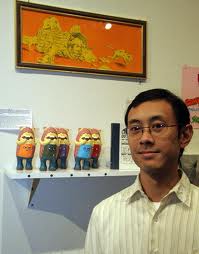
How did you come to work on The Problem Solverz?
John Pham, a designer on Problem Solverz, was my man on the inside. He was hounding me for months to apply for a job on the show. But I was a stay-at-home parent at the time, so I was reluctant at first. Eventually I caved. He got me a meeting with Ben Jones, the creator, and Nate Funaro, the producer and they decided to take a chance on me.
How does your work in comics inform your work in animation and vice versa?
Since my position on Problem Solverz (was) mainly editorial, there’s nothing too creative or artistic about it. So comics doesn’t really inform it in any way. But doing comics over the years has taught me a lot about color, which helped me a lot on some Flash animation jobs I had previously, where I had to color backgrounds or come up with color palettes for an episode. As far as animation informing my comics work, there are times when I’m drawing a character in a comic panel, where I feel I need to push the “silhouette” more, and that goes all the way back to my animation school days at UCLA.
What comics have you made?
Publications to date (oldest to newest): Zurik Robot mini (2001), Hi-Horse Anthology (contributor, 2003), Dang #1 (Top Shelf, 2004), Drawn&Quarterly Showcase #4 (2006), Kramers Ergot 7 and 8(contributor), Mome #1-5 (contributor, 2006-2009), Anthology of Graphic Fiction, Cartoons and True Stories: Vol. 2 (contributor, 2008), Best American Comics (2008), Stories #1-3, (self published minis, 2009-2010)
What comics are you working on right now?
I’m currently working on a book length project, but it’s still in the thumbnail stage. I’m hoping to shop that around to publishers sometime this year.
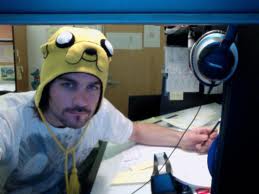
How did you come to work on Regular Show?
I originally got my start at Cartoon Network by writing/storyboarding for Thurop Van Orman’s “The Marvelous
Misadventures of Flapjack.” JG Quintel was the Creative Director on the show and Mike Roth (Regular Show’s current Supervising Producer) was my first-ever writing partner at the time. Since they both knew my work from Flapjack, I was very fortunate that they called upon me to do boards for Regular Show.
How does your work in comics inform your work in animation and vice versa?
My background is primarily in animation, but my focus on storyboarding is not that dissimilar from comics. Both are narrative artforms that use visuals to convey a certain message – the only difference that in film/animation everything relies a lot more around screen continuity. Many of my coworkers and peers at Cartoon Network come from comics and what inspires me the most is their ability to maintain their creative voices in their personal work as well as adapting to a particular style of a show.
What comics have you made?
I haven’t actually published any comics or really posted any online, but I’ve dabbled in doing personal comics during my downtime, collaborating with friends in comic jams, and just doodling ideas in my sketchbook.
What comics are you working on right now?
I’m currently developing a mini-comic comprised of short personal stories titled “The Embarrassing Story Chronicles,” which is about various embarrassing instances that have occurred in my life. The first issue was called “Wrong Car.” You can also check out more of my personal work on my blog at http://bentonconnor.blogspot.com/
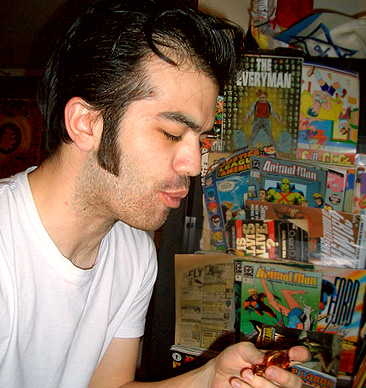
How did you come to work on Adventure Time?
Tom Herpich first contacted me about auditioning for the show, but the position required me to move from Toronto (where I currently live) to LA, which wasn’t an option for me for a number of reasons. It became possible for me to work for the show remotely a few months later, which I was pretty thrilled about. I feel very lucky that it all worked out!
How does your work in comics inform your work in animation and vice versa?
It’s definitely influenced the way I’ve been drawing my comics. The work I do on the show forces me to simplify the way I draw a lot more, which has been good for me. Normally, I overdraw all my comics to hide all my mistakes, but I can’t do that on the show – it forces me to consider principles of construction and design in new and interesting ways.
What comics have you made?
Lose #s 1-3 from Koyama Press: http://www.kingtrash.com/comics.html, Spotting Deer, Peter’s Muscle: http://whatthingsdo.com/authors/#Michael%20DeForge
What comics are you working on right now?
I’m currently working on a serialized mini-comic called Open Country that I’ve been self publishing, and drawing the series Lose for Koyama Press. I’ve also began to serialize a web strip called Ant Comic on my blog: http://michaeldeforge.wordpress.com
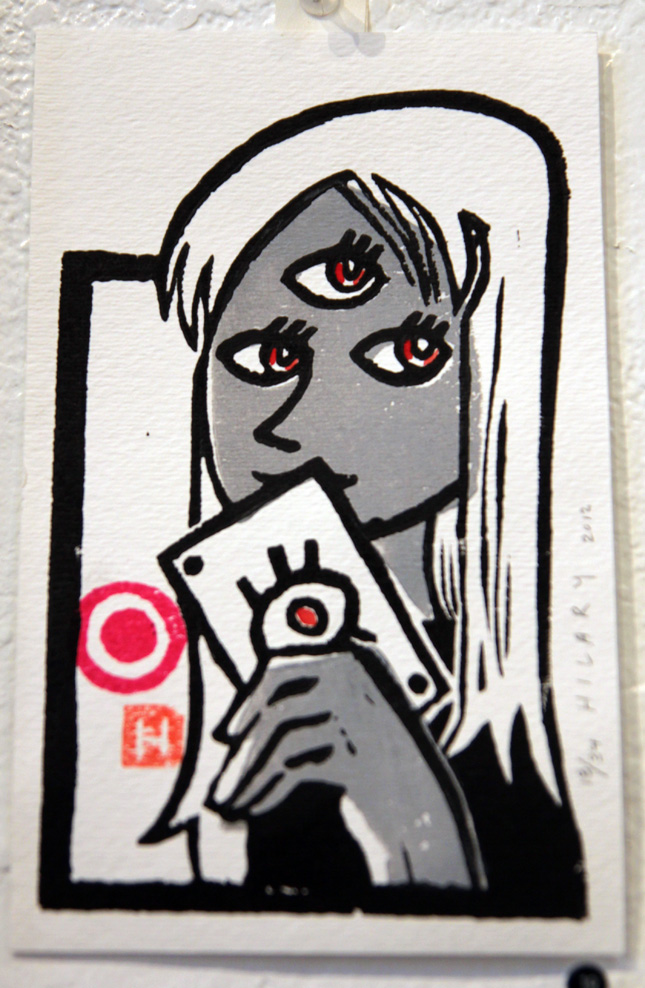
How did you come to work on The Regular Show?
I had just finished a book and was growing weary of office temping where I was doing payroll for a large IT company. I was doing occasional freelance work when Calvin Wong told Jon Vermilyea who told me that I should take a storyboarding test for Regular Show.
How does your work in comics inform your work in animation and vice versa?
There’s a big manga influence in my comics that’s not present in my animation work. The composition is different. I’ve had to get used to writing on a 6 panel grid as opposed to using layouts like diagonal panels. Animation is more linear than comics. Also, it’s really nice to be able to work with others. At first, I was hesitant on that score but now it’s nice to be able to collaborate and bounce jobs off of each other. Most of all it’s taught me to take criticism and be less precious about my comics.
What comics have you made in the past?
I adapted and illustrated Bloody Chester from a screenplay by J.T. Petty, which will be released by 1st 2nd Books on July 3, 2012 . I received honorable mentions in the 2009 and 2010 editions of Best American Comics for my comics I Love Love and Prescription Strength. More of my work can be seen at http://www.hilaryflorido.com/
Hellen Jo (Storyboarder and Storyboard Revisionist, Regular Show)
How did you come to work on Regular Show?
Just like Calvin Wong, comics got me this job! The inestimable Dylan Williams, of Sparkplug Comic Books, had published my first non-zine comic, Jin & Jam, in 2008, and for the last three years, it had been making the rounds, fading in and out of obscurity, fortuitously being “rediscovered” and then “forgotten”, over and over again. At some point, possibly at San Diego Comic-Con, the creator of Regular Show, JG Quintel, picked up a copy. He also picked up a copy of my boyfriend Calvin Wong’s comic, “Ramble On”, and Calvin was hired six months later. While Calvin worked diligently on the show, I grew to love watching it. At the time, I was struggling to continue as a freelance illustrator in San Francisco while trying to convince myself that I wanted to finish art school; however, I lived in self-doubt and uncertainty regarding the future, and I even submitted a storyboard test to Regular Show early on, without much expectation. All the while, Calvin kept trying to persuade me to move down south with him. About a year and half after Calvin was hired, I finally came to my senses and dropped out of school late in the spring, and almost immediately, JG and producer Janet Dimon offered me an assistant revisionist job.
How does your work in comics inform your work in animation and vice versa?
The task of revising storyboards seems to consist mainly of cleaning up rough drawings (making them more legible for the various designers and Korean animators) and correcting mistakes or implementing changes that need to be made. I would compare this stage of the process to inking a comic. When inking, I try my best to make the drawings as legible for the reader as possible, while also trying to perfect the drawings themselves, and when cleaning up storyboards, I aim to make the characters’ expressions, gestures, and their surroundings as clear as possible for the designers and animators who will be working off of these drawings. Sometimes, I also try to clarify the narrative of a particular sequence of events, either by inserting more detailed backgrounds, or by re-staging the characters and the backgrounds, adding cutaways or wider shots or a few “in-between” panels to provide more information, and these are the very same techniques that I try to use in my comics, to improve transitions between scenes, as well as the narrative flow between the panels themselves.
So far, I’ve found that doing revisions in a professional work setting has caused me to improve and refine these skills, which I used lazily and quite carelessly in my own comics in the past, so hopefully my future work will be much more polished, and more pleasurable to read.
What comics have you made in the past?
Published solo work: + Jin & Jam No. 1 (Sparkplug Comic Books, 2008; also available online at whatthingsdocom), Recent anthology comics: + “Meditations”, written by Jason Martin, illustrated by me, Papercutter #17 (Tugboat Press, 2011), “Making Friends”, Root Rot (Koyama Press, 2011), “Shit We Saw at the Lady Gaga Monster Ball Tour”, co-written and co-illustrated with Calvin Wong, Prison For Bitches (edited by Ryan Sands and Michael DeForge, 2010), “Diamond Heights”, Papercutter #9 (Tugboat Press, 2009), Recent magazine comics: “hellen Welt”, The Believer, March/April 2010, “You Make My Heart Sing”, Vice Presents: Where the Wild Things Are (Vice/Warner Bros., 2009), Various, Giant Robot Magazine, 2007-2009, Webcomics: “Girls Girls Girls Girls Girls I Do Adore”, Vice Magazine Online, 2009 (http://www.viceland.com/int/v16n8/htdocs/comics-hellen-jo-112.php) Self Published Comics: Blister No. 1 (2006), Paralysis (2005)
What comics are you working on right now?
Currently, I am working on the second issue of Jin & Jam. (No, really, I swear I am. I’ve got thirty pages pencilled!!) I am also writing an as-of-yet untitled single-issue horror comic for Koyama Press. My main site url is www.helllllen.org, from which you can detour to my blog and all of my social networking pages.
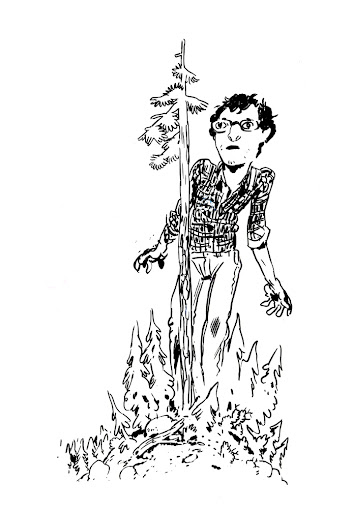
How did you come to work on Adventure Time?
There were three or four guys on the crew who knew me or knew my comics. They kept asking me, one after another, to move out and work on the show. It was really flattering, but moving across the country to work for this show (which had barely started production at that point) seemed just totally unthinkable to me. I didn’t know anything about the industry at all. It just seemed crazy. But then my situation in New York got kinda dire, and I gave in, took the job, and moved out to LA a couple weeks later. No regrets.
How does your work in comics inform your work in animation and vice versa?
I describe storyboarding as a fusion of comics and sheet music. It is comics. You can pretty much read it as comics, but its primary function is conveying a lot of instructions to a lot of people in order to make a cartoon. So there’s a lot of overlap, as far as techniques go, you just have to rearrange a few habitualized priorities when you switch back and forth.
What comics have you made?
I put out “Cusp” in 2003 and “Gongwanadon” in 2004 with Alternative Comics. I’ve had work published in the Meathaus and Flight anthologies, and in Vice and Nickelodeon Magazine. And a short piece in Brandon Graham’s “King City” most recently.
What comics are you working on right now?
I just finished a new collection of short pieces in the same vein as Cusp and Gongwanadon, and am in the process of looking for a publisher right now. Here’s my website (which doesn’t update very often) thomasherpich.com, and my blog (which updates a lot more often) herpich.blogspot.com
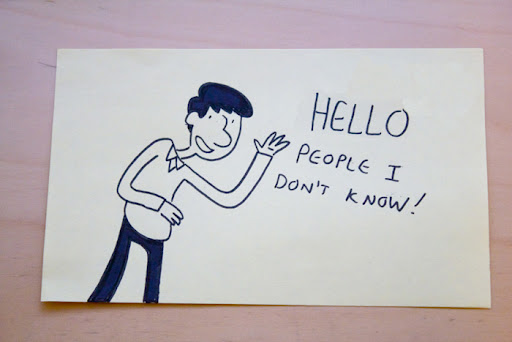
How did you come to work on Regular Show?
About six months ago I was living in Minneapolis and working at a movie theatre to (barely) make ends meet while devoting my free time to comic and film projects. I was a big fan of Regular Show and never missed an episode. One day I noticed a post on JG Quintel’s twitter that said “I’m searching for board artists for Regular Show. neeeeeed more board artists” and figured I may as well give it a go. I sent him some samples of my comic and film work and he liked them enough to send me a storyboard test. Then I got the job and moved to LA! Thank god. To say I’m “living the dream” would be an understatement. I never imagined I’d get an opportunity to work on any show, let alone one of my absolute favorites.
How does your work in comics inform your work in animation and vice versa?
Storyboarding and comics definitely have their own distinct languages, which means that I’m doing a whole lot of learning on Regular Show. The techniques and shortcuts I’m picking up doing storyboards tend to bleed more into my comic work than vice-versa.
What comics have you made in the past?
I’ve mainly put out autobiographical comics in the form of my zine Memory Foam and anthology appearances in Good Minnesotan, Ghost Comics, and an upcoming FORT90 Zine. A good chunk of my work can be seen on my old livejournal page for some reason.
What comics are you working on right now?
My main projects at the moment are the third issue of Memory Foam and an adventure/comedy comic for younger readers, the first installment of which should be coming out this year via 2D Cloud.
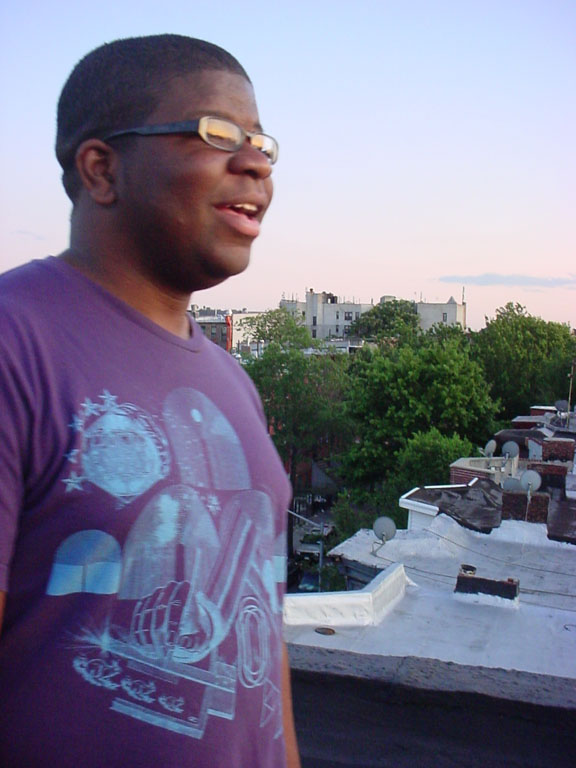
How did you come to work on Adventure Time?
I had been working in New York on The Venture Bros as animation director. Their 4th season was wrapping up and Phil Rynda (the then lead designer on Adventure Time) recommended me for the job.
How does your work in comics inform your work in animation and vice versa?
I drew comics throughout my childhood and teen years because I had no way to do animation on my own(this was before every 12-year-old in the world could easily make Flash cartoons). Eventually I went to art school to do animation and put comics on hold for a bit. But starting out in comics really helped me practice visual storytelling, and made the transition to storyboarding much easier
What comics have you made in the past?
The most famous was an old webcomic I did in my teen years, “RPG World” http://rpgworldcomic.com/ . After that and other projects I co-created 68 episodes of “nockFORCE” http://www.nockforce.com (not really a comic, sorry)Since then I have been working on new mini-comics. One of my most recent was “Tent Sale”. http://www.blackdotstudios.com/tentsale/
What comics are you working on right now?
I just finished a new minicomic, “Beta Temple”. If you don’t manage to see me at any conventions for 2 years It’ll go online eventually. You can keep up with my work at http://ianjq.tumblr.com/



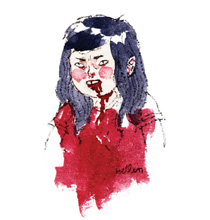
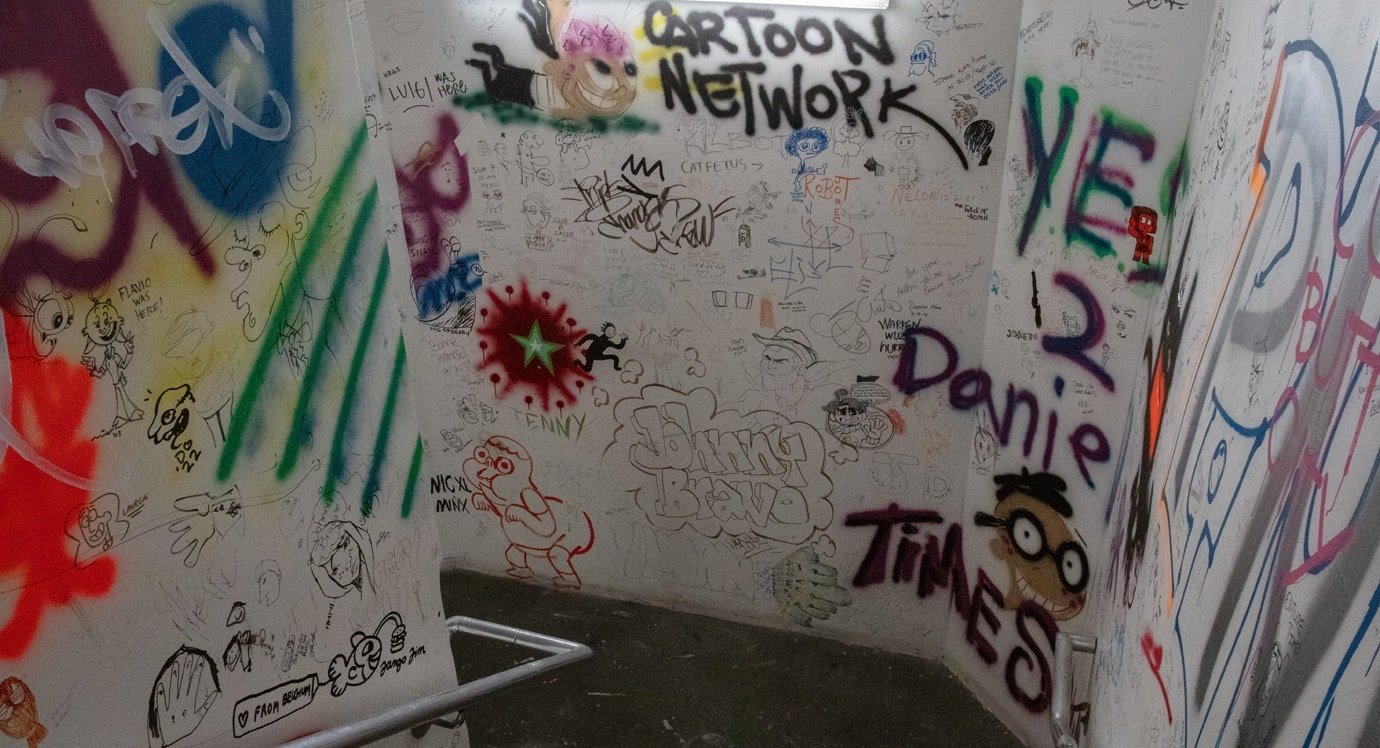
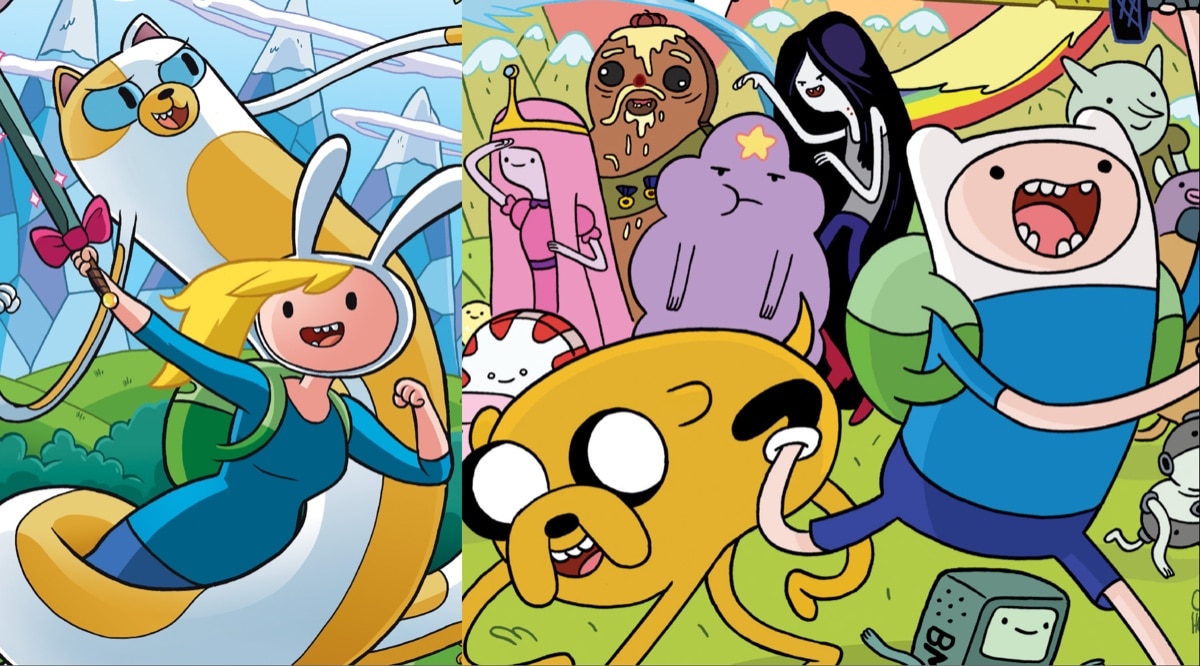
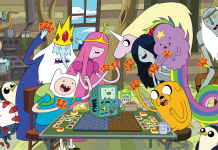



Is the Herpich interview a bit older?
It was not so long ago that the estimable Chris Pitzer announced that Tom Herpich’s book would be released in the fall by the mighty AdHouse.
http://www.adhousebooks.com/blog/?p=293
Things haven’t changed have they? I was looking forward to picking that one up.
Yes – these are a bit old! Thanks for the update on the Herpich happenings.
Thanks for letting me know. I’m happy that the book is still on.
I’m really enjoying these and I’m especially grateful to you for tipping me off about the Adventure Time Season 1 set finally being released.
I love hearing stories about how people barely made ends meat and then boom they got a brake..heres hoping :D
Adventure Time and the Regular Show are by far the worst pieces of animation I have ever seen. Perhaps if I had consumed copious amounts of LSD in my younger years I would enjoy this sort of entertainment; however, I did not and my brain is functioning as it should. I don’t think the writers or the artists were having a difficult time making ends meat because of a lack of ability, I believe that is directly related to their warped sense of reality. There is artistic expression, and then there are bad trips. Your shows are nothing but bad trips that I never wanted to take and I loath the creators for disguising their flashbacks as entertainment for kids.
FYI: the only people that find your shows the least bit entertaining are junkies, old single men living in their parents’ basements, teens on acid trips, and children whose brains have not fully developed and who find farts and human anatomy funny. Well, at least you have an audience, I guess the type of audience doesn’t interest you in the least.
Comments are closed.